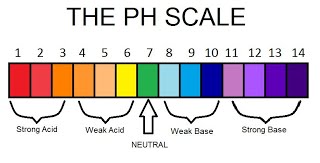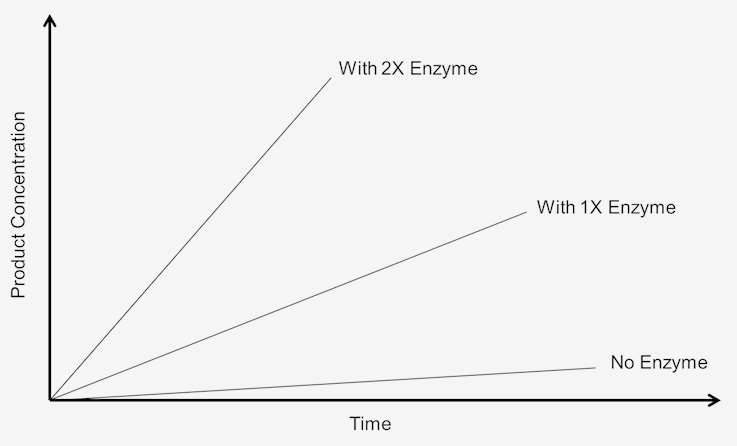Environmental Impacts on Enzyme Function Study Guide
Introduction
The function of the enzyme is related to its structure. So if the structure of an enzyme changes, its factors will change too. Factors like pH and temperature can cause a disruption in the hydrogen bonds in the enzyme, which makes them denature. The concentration of the substrate molecules in any solution can also affect how quickly an enzyme’s function carries out a reaction. Some molecules behave as an inhibitor and cofactor to start or stop the enzyme’s functioning. So let’s know the impact of the environment on enzyme functions.
How does the environment impact the function of enzymes?
Let’s take an egg as an example. The egg is a big cell. It has all kinds of enzymes and proteins which can make a new organism. However, when an egg is cracked and placed in a heated frying pan, its protein and enzymes denature. The enzyme structure and function of the protein transforms into amino acid strings. The chains start to intertwine, and water starts to evaporate. The egg then solidifies and starts to look white instead of looking clear.
Heat is one of the environmental factors that can destroy the protein in an egg. The other is any change in pH, which can denature the protein. Even if there is a slight change in the pH or the temperature of a solution, it can potentially destroy the cell enzymes.
Structure and enzyme function
An enzyme’s function and structure are intimately related, and enzymes have four protein structures.
- The primary structure has the amino acid sequence in the polypeptide chain.
- The secondary structure is formed when there is an interaction between the amino acids which creates beta sheets and motifs like alpha-helices.
- The tertiary structure is formed when there is an interaction between the amino acids related to the peptide and the secondary motifs.
- The quaternary structure is formed when several protein chains form a huge superstructure.
Change in enzyme structure affects its functioning
When everything is in order, the enzymes are bound in a particular shape by several bonds at every protein structure level. This is the ideal structure, and the enzyme can catalyze the reactions as it is supposed to.
If the protein structure changes, then this causes a major alteration. If there are broken hydrogen bonds, this is minor, making the bond less efficient. However, if the alteration is severe, this causes the enzyme to denature, and the enzyme thus does not function. It causes the structure to disrupt and does not catalyze the reaction.
The cellular environment affects the enzyme functioning
Let us now go through a few environmental factors that can impact the functioning of the enzyme.
Temperature
When the temperature increases, the enzyme reaction rate increases or decreases to its optimum level. This happens because the molecules in the enzymes gain kinetic energy and thus move fast. It increases or decreases its chances of collision.
When the temperature is more than the optimum range for the enzyme activity, the enzyme denatures as the bonds that hold the tertiary structure are broken. The bond beaks and the 3D structure of the enzyme is altered, and this is called denaturation. The active enzyme also changes shape, and the substrate cannot fit as the shapes are no more the same.
pH
How does pH affect enzyme activity? Every enzyme has an optimum pH level, which may not always be equal to 7. When the value increases or decreases beyond the reaction optimum rate, the bonds that hold the tertiary structure are disrupted. The 3D shape of the active site and the enzyme changes. The enzyme thus denatures or dies, and the substrate does not fit into the active site anymore. You need to keep buffers to keep the pH value constant or high.
Enzyme concentration
There are more or fewer substrate molecules at a low enzyme concentration than what is present in the active site. When the number of active sites is increased, the rate of enzyme reaction increases. The enzyme concentration is the reaction limiting factor. It eventually increases the concentration of the enzyme, and this does not cause any change in the reaction rate. The reaction rate remains as it is or lowers down. It is the number of substrate molecules that becomes the limiting factor.
Substrate concentration
The enzyme concentration is the reaction limiting factor at a low substrate concentration. This is because there are not sufficient substrate molecules to occupy each enzyme’s active site. When the concentration of the substrate increases, the enzyme reaction rate increases or decreases with more enzyme-substrate complexes formed. The rate then reaches a maximum level when the substrate molecules occupy all the active sites of the enzymes. The reaction rate depends on the turnover rate of the enzyme.
Conclusion:
- The enzymes have an optimum temperature and a pH, which is activated at a peak.
- Denaturation is a change in the 3D structure of the bonds caused by temperature and pH changes above the optimum levels.
- The enzymes are inactive at a low temperature, and there are small changes in the pH around the optimum value.
- The enzyme-controlled reaction rate increases when there is an increase in temperature due to an increase in the frequency of collision.
- The buffers resist any changes in the pH and thus maintain a constant level of pH.
- The rate of the enzyme-controlled reaction is limited when the substrate concentration or the enzyme concentration is low, and this is because a few enzyme-substrate complexes are formed.
Continue your learning journey
Learn more about bonding
Learn more about effect of climate on organisms
Learn more about enzymes and their structures
Learn about enzyme functions
FAQs:
1. How does the environment influence enzyme structure and function?
The temperature, the pH level, and the concentration impact the structure and the function of the enzymes.
2. What environment is the best for enzymes?
Enzymes are the best in an optimal pH and temperature range.
3. Which of the following environments do not influence cellular enzyme activity?
Free energy does not impact the cellular activity of the enzyme.
4. How do enzymes function and interact to influence the cellular environment?
The enzyme binds its substrate and forms a complex compound. These get the substrates together and form an ideal environment for a reaction.
5. Why is the pH of the environment essential for enzyme activity?
Every enzyme has an optimal pH range, which is when it works the best.
We hope you enjoyed studying this lesson and learned something cool about the Environmental Impacts on Enzyme Function! Join our Discord community to get any questions you may have answered and to engage with other students just like you! Don’t forget to download our App to experience our fun VR classrooms – we promise, it makes studying much more fun! 😎
Sources:
- Environmental Impacts on Enzyme Function. https://biologydictionary.net/ap-biology/3-3-environmental-impacts-on-enzyme-function/. Accessed 17 Dec, 2021.
- Environmental Impacts on Enzyme Function. https://fiveable.me/ap-bio/unit-3/environmental-impacts-on-enzyme-function/study-guide/Q8PevM3BI76060aoWtit. Accessed 17 Dec, 2021.
- Factors affecting enzyme activity. https://ucps.instructure.com/courses/195276/assignments/1722302. Accessed 17 Dec, 2021.



